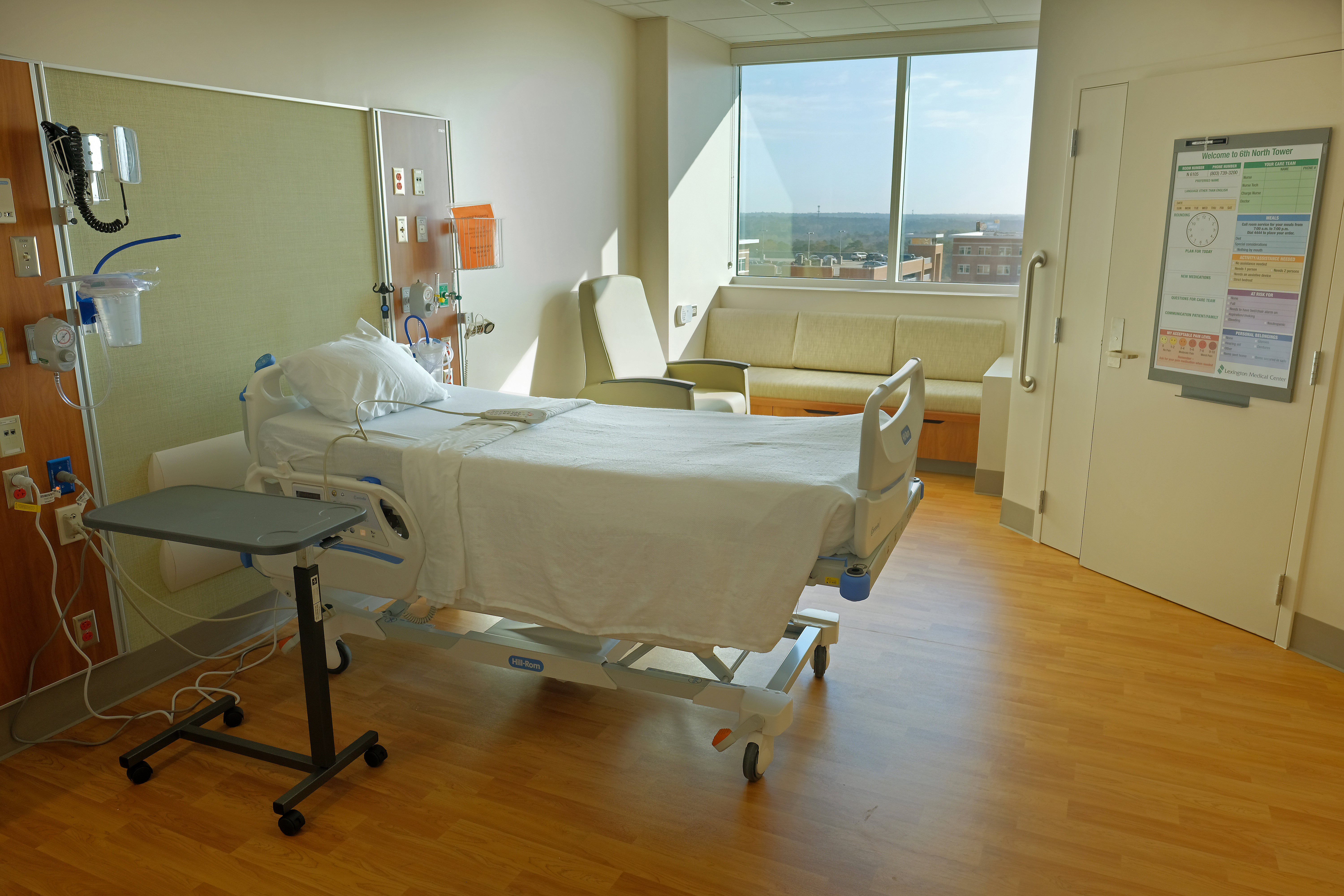Below is an article written by Dynamix Engineering, a company that provides consulting services for building and infrastructure systems around the United States. Lexington Medical Center worked with Dynamix during the building of its new patient care tower that opened in 2019. This article explains how the innovative features in the new tower can be helpful during the COVID-19 epidemic.
In 2014, the Lexington Medical Center partnered with Dynamix Engineering (Dynamix), as part of their $400 million expansion and renovation project to create an industry-leading facility. During the design phase of the project, the hospital was insistent on going beyond industry best practices to build a facility that was ready to deal with modern problems. Lexington was focused not just on today, but what may happen tomorrow. That vision for the future gave Dynamix Engineering the flexibility to design an HVAC system that was up to the challenge.
This expansive project added 250 beds, including 60 dedicated to critical care and 100 stepdown, to the hospital and renovated many existing structures. This has given Lexington incredible flexibility to respond to the outbreak of COVID-19. Because the air itself is often a vector for disease transmission, the design of Lexington's HVAC system plays a critical role in helping to mitigate risk. For surgical and critical-care patients, this takes the form of Positive Pressure rooms. By using the HVAC system to supply slightly more air to a room, it creates a slightly higher pressure inside than in the halls around it. This results in the air from outside being unable to migrate into areas with high-risk patients.

The flip side to a Positive Pressure room is a Negative Pressure room, which is used to contain airborne contaminants within a specific space. What sets Lexington apart isn't that they have Negative/Positive pressure rooms, but the degree to which they can create them. During the design phase, Lexington and Dynamix discussed what systems could be installed to effectively handle many situations, including an outbreak of the flu. With that in mind, Dynamix designed a system that allows for patient rooms on entire floors of the new patient wing to operate in Negative Pressure, as needed. Paul Wise, the Assistant Director of Engineering, at Lexington emailed Dynamix to say, "You have designed a very versatile HVAC system, and we greatly appreciate having so many possibilities in our new tower."
Lexington adopted other innovative strategies included HEPA filter racks in each unit, the ability to switch air handling units into outdoor air "purge" mode, and setting up the system for all patient rooms to be converted to critical care air change rates. The Vice President of Operations for Lexington Medical Center, Michael Greeley stated, "The most useful part of our partnership is the trust and expertise that Dynamix consistently delivers."
That trust is now paying off as Lexington Medical Center's building systems, and air-management infrastructure is uniquely positioned to care for COVID-19 patients. The state-of-the-art control technology that Dynamix installed allows Lexington to change room and floor conditions at the touch of a button. At the start of the current COVID-19 pandemic, Lexington contacted Dynamix for advice on how their HVAC system could be adapted. Dynamix responded with a list of possible control changes and their ramifications, and within 12 hours, the hospital had already created 12 additional negative pressure rooms and was prepared to start converting entire floors.





